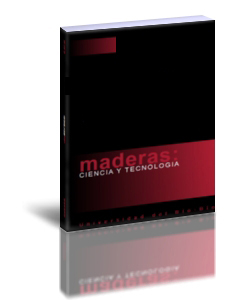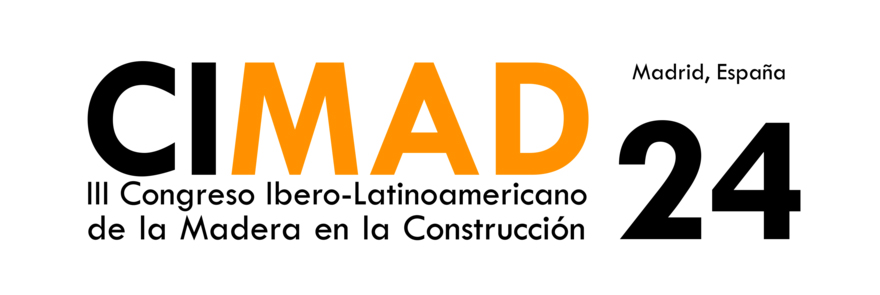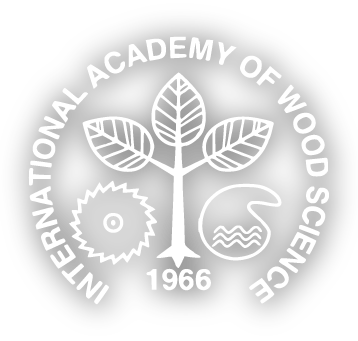El bambú Tonkin (Pseudosasa amabilis) como material a explorar en el Ecodiseño. El diseño de un puesto de mercado como caso de estudio
DOI:
https://doi.org/10.22320/s0718221x/2024.05Keywords:
Bambú, Pseudosasa amabilis, Innovación impulsada por el diseño, Análisis de ciclo de vida, Economía circular, Ecodiseño, Herramientas CAD/CAEAbstract
El análisis del ciclo de vida (ACV) permite evaluar el impacto ambiental en las diferentes etapas de un diseño/ producto. En el caso de la etapa de selección de materiales, entre las materias primas que tienen un mayor impacto ambiental y alto consumo energético se encuentra el acero. En este contexto, en esta investigación se estudia el uso de Pseudosasa amabilis (bambú Tonkin) como material estructural y estrategia de Ecodiseño, se compara su impacto medioambiental con el del acero en un rediseño de un puesto de mercado para frutas y verduras. Para llevar a cabo el proceso de diseño, se ha trabajado bajo el enfoque de Diseño para la Sostenibilidad (D4S) con la herramienta SolidWorks®, en la que se ha desarrollado el diseño de detalle, incluyendo el estudio del comportamiento estático y ACV, es decir, el estudio de la sostenibilidad de la estructura en el marco del nuevo paradigma de la Economía Circular. Se realizó el rediseño con bambú Tonkin, a partir de un muestreo que arrojó unos datos medios de 30 mm de diámetro y espesor de 6 mm. Los resultados obtenidos, de forma teórico-experimental y con la simulación numérica, confirman que el bambú Tonkin tanto en el análisis de elementos finitos (FEA) como en el estudio de sostenibilidad (ACV), es un material con unas excelentes cualidades estructurales a la vez que tiene un impacto medioambiental mínimo. Es por ello, que se proponen
nuevas líneas de trabajo y se invita a otros grupos de investigación a que se interesen sobre este material verde desconocido.
Downloads
References
Amada, S.; Munekata, T.; Nagase, Y.; Ichikawa, Y.; Kirigai, A.; Zhifei, Y. 1996. The mechanical structures of bamboos in viewpoint of functionally gradient and composite materials. Journal of Composite Materials 30(7): 800-819. https://doi.org/10.1177/002199839603000703
Amada, S.; Untao, S. 2001. Fracture properties of bamboo. Composites Part B: Engineering 32(5): 451-459. https://doi.org/10.1016/S1359-8368(01)00022-1
Borowski, P.F.; Patuk, I.; Bandala, E.R. 2022. Innovative Industrial Use of Bamboo as Key “Green” Material. Sustainability 14(4): 1955. https://doi.org/10.3390/su14041955
Brezet, H.; Silvester, S. 2004. Design for sustainability (D4S): Towards advanced producto concepts. Environmental Engineering and Management Journal J 3(4): 591-602. https://n9.cl/5waeqt
Brito, F.M.S.; Bortoletto-Júnior, G.; Paes, J.B. 2022. Wettability and decay of particleboards manufactured with thermally treated sugarcane residue and bamboo (Dendrocalamus asper) particles. Maderas. Ciencia y Tecnología 24(30):1-18. http://dx.doi.org/10.4067/s0718-221x2022000100430
Cheng, L.; Adhikari, S.; Wang, Z.; Ding, Y. 2015. Dynamic variation of fuel properties of Tonkin Cane (Pseudosasa amabilis) during maduration. Energy Fuels 29(4):2408-2415. https://doi.org/10.1021/acs.energyfuels.5b00385
Cheng, L.; Hui, C.; Reddy, G.V.; Ding, Y.L.; Shi, P.J. 2017. Internode morphometrics and allometry of Tonkin Cane Pseudosasa amabilis. Ecology and Evolution 7(22): 9651-9660. https://doi.org/10.1002/ece3.3483
Crul, M.R.M.; Diehl, J.C. 2006. Design for sustainability: a practical approach for developing economies. United Nations Environment Programme (UNEP), Paris, Francia.
Escamilla, E.Z.; Habert, G. 2014. Environmental impacts of bamboo-based construction materials representing global production diversity. Journal of Cleaner Production 69: 117-127. https://doi.org/10.1016/j.jclepro.2014.01.067
Gaff, M.; Gašparík, M. 2013. The development of stresses during the shaping of the surface of aspen wood and their impact on the quality of the surface. BioResources 8(3): 3741-3752. https://n9.cl/pyujf
Gaff, M.; Gašparík, M.; Borůvka, V.; Haviarová, E. 2015. Stress simulation in layered wood-based materials under mechanical loading. Materials & Design 87(15): 1065-1071. https://doi.org/10.1016/j.matdes.2015.08.128
Gašparík, M.; Gaff, M.; Babiak, M. 2017. Tension stress simulations of layered wood using a finite element method. Wood Research 62(4), 517-528. https://n9.cl/8kc8o
Ghavami, K.; Moreia, L.E. 1996. Development of a new joint for bamboo space structures. WIT Transactions on The Built Environment 21: 201-210. https://n9.cl/cklmi
González-Yebra, Ó. 2014. Caracterización del bambú Guadua (Guadua Angustifolia) para el diseño e industrialización en España. vol. 94. Universidad de Almería: Almería, España. ISBN: 978-84-16027-12-5
González-Yebra, Ó.; Aguilar, M.A.; Aguilar, F.J. 2019a. A first approach to the Design Component in the agri-food industry of southern Spain. Revista de La Facultad de Ciencias Agrarias 51(1): 125-146. https://n9.cl/qc416
González-Yebra, Ó.; Aguilar, M.A.; Aguilar, F.J. 2019b. Is the Design a Vector to be Considered in the Agri-food Industry? An Interprofessional Analysis in Andalusia (Spain). In: Advances on Mechanics, Design Engineering and Manufacturing II. Cavas-Martínez, F.; Eynard, B.; Fernández-Cañavate, F.; Fernández-Pacheco, D.; Morer, P.; Nigrelli, V. (Eds.). Springer: Cham. https://doi.org/10.1007/978-3-030-12346-8_59
Harries, K.A.; Bumstead, J.; Richard, M.; Trujillo, D. 2017. Geometric and material effects on bamboo buckling behaviour. Proceedings of the Institution of Civil Engineers - Structures and Buildings 170(4): 236-249. https://doi.org/10.1680/jstbu.16.00018
Hernández-López, S.; Ávalos-Vargas, A.; Zamudio-Sánchez, F.J.; Orozco-Gutiérrez, G.; Borja-de la Rosa, A.M. 2021. Colorimetría de los tallos del bambú (Guadua angustifolia) en tres estados de madurez. Maderas. Ciencia y Tecnología 23(8): 1-10. http://dx.doi.org/10.4067/s0718-221x2021000100408
Hidalgo-López, O. 1981. Manual de construcción con bambú. Estudios Técnicos Colombianos LTDA-Editores. Universidad Nacional de Colombia. Centro de investigación de Bambú y Madera (CIBAM).
ISO. 2018. Bamboo structures -Grading of bamboo culms - Basic principles and procedures. ISO 19624:2018. ISO: Ginebra, Suiza.
ISO. 2019. Bamboo structures - Determination of physical and mechanical properties of bamboo culms - Test methods. ISO 22157:2019. ISO: Ginebra, Suiza.
Jakovljević, S.; Lisjak, D.; Alar, Ž.; Penava, F. 2017. The influence of humidity on mechanical properties of bamboo for bicycles. Construction and Building Materials 150: 35-48. https://doi.org/10.1016/j.conbuildmat.2017.05.189
José, F.J.; Beraldo, A.L. 2010. Tableros de partículas de bambú (Bambusa vulgaris Schrad) y resina poliuretana a base de aceite de rícino (Ricinus communis L.). Ambiente Construído 10(4): 259-266. https://doi.org/10.1590/S1678-86212010000400018
Kaminski, S.; Lawrence, A.; Trujillo, D. 2016a. Structural use of bamboo Part 1: Introduction to bamboo. The Structural Engineer 94(8):40-43. https://n9.cl/l9f8p
Kaminski, S.; Lawrence, A.; Trujillo, D.; Feltham, I.; López, L.F. 2016b. Structural use of Bamboo Part 3: Design values. The Structural Engineer 94(12): 42-45. https://n9.cl/2mcys
Kaur, P.J. 2018. Bamboo availability and utilization potential as a building material. Forestry Research and Engineering: International Journal 2(5): 240-242. https://doi.org/10.15406/freij.2018.02.00056
Koç, K.H.; Kizilkaya, K.; Erdinler, E.S.; Korkut, D.S. 2011. The use of finite element method in the furniture industry. African Journal of Business Management 5(3): 855-865. https://doi.org/10.5897/AJBM10.551
Kuehl, Y.; Yiping, L. 2012. Carbon Off-Setting with Bamboo. International Network for Bamboo and Rattand (INBAR), Working Paper nº. 71, Beijing, China.
Liese, W. 1998. The anatomy of bamboo culms. International Network for Bamboo and Rattan (INBAR), Technical report nº. 18, Beijing, China.
Luna, P.; Lozano, J.; Takeuchi, C. 2014. Determinación experimental de valores característicos de resistencia para Guadua angustifolia. Maderas. Ciencia y Tecnología 16(1): 77-92. http://dx.doi.org/10.4067/S0718-221X2014005000007
Mora-Rodríguez, L.; Hernández-González, J.R.; Martirena-Hernández, J.F.; Ariel-Jiménez, S. 2008. El tablero de bambú prensado, una nueva propuesta tecnológica. Revista Ingeniería de Construcción 23(3): 179-186. https://n9.cl/1q01g
Moroz, J.G.; Lissel, S.L.; Hagel, M.D. 2014. Performance of bamboo reinforced concrete masonry shear walls. Construction and Building Materials 61: 125-137. https://doi.org/10.1016/j.conbuildmat.2014.02.006
Nguegang-Nkeuwa, W.; Zhang, J.; Semple, K.E.; Chen, M.; Xia, Y.; Dai, C. 2022. Bamboo-based composites: A review on fundamentals and processes of bamboo bonding. Composites Part B: Engineering 235: 109776. https://doi.org/10.1016/j.compositesb.2022.109776
Penava, F.; Jakovljević, S.; Alar, Ž. 2016. Bamboo bicycle-past or future?. Indecs 14(1): 70-79. https://doi.org/10.7906/indecs.14.1.7
Peña, C.; Cabrera, A.; Emilia, M.; Castro, A.; Michelena, E.; Rúgolo de Agrasar, Z.; Soria, P.; Zagare, V. 2015. Solución Bambú: Guía para el manejo sustentable del Género Phyllostachys. Editorial Tigre: Buenos Aires, Argentina.
Pérez-Ortega, S.; González-Yebra, Ó.; Oliva, R.M.; Álvarez, A.J. 2021. Theoretical study for redesign of an agricultural package applying ecodesign strategies and CAD/CAE tools. Dyna 96(4): 435-440. https://doi.org/10.6036/9979
Ravazzolo, F.; Vespignani, J. 2020. World steel production: A new monthly indicator of global real economic activity. Canadian Journal of Economics 53(2): 743-766. https://doi.org/10.1111/caje.12442
Rush, F.; Hilling, E.; Chagas-Mustefaga, E.; Trevisan, R.; Prata, J.G.; De Magalhães-Miranda, G. 2023 Particleboard experimental production with bamboo, pine and mate for one product of new applications. Maderas. Ciencia y Tecnología 25(14): 1-12. http://dx.doi.org/10.4067/s0718-221x2023000100414
SolidWorks®. 2018. Dassault Systèmes SolidWorks Corp. Waltham, Massachusetts, EE. UU.
Song, X.; Zhou, G.; Jiang, H.; Yu, S.; Fu, J.; Li, W.; Wang, W.; Ma, Z.; Peng, C. 2011. Carbon sequestration by Chinese bamboo forests and their ecological benefits: assessment of potential, problems, and future challenges. Environmental Reviews 19: 418-428. https://doi.org/10.1139/a11-015
Takeuchi, C.P. 2004. Comportamiento estructural de la guadua angustifolia. Uniones en guadua. Ingeniería e Investigación 24(2): 3-7. https://n9.cl/pkczx
Tan, T.; Rahbar, N.; Allameh, S.M.; Kwofie, S.; Dissmore, D.; Ghavami, K.; Soboyejo, W.O. 2011. Mechanical properties of functionally graded hierarchical bamboo structures. Acta Biomaterialia 7(10): 3796-3803. https://doi.org/10.1016/j.actbio.2011.06.008
Trujillo, D.; Jangra, S. 2016. Grading of Bamboo. International Network for Bamboo and Rattand (INBAR), Working Paper nº. 79, Beijing, China. https://n9.cl/1yetq
Trujillo, D.J.; López, L.F. 2020. Bamboo material characterisation. In Nonconventional and Vernacular Construction Materials. Harries, K.A., Sharma, B. (Eds.). Woodhead Publishing: Sawston. https://doi.org/10.1016/B978-0-08-102704-2.00018-4
Van Dam, J.E.G.; Elbersen, H.W.; Daza-Montaño, C.M. 2018. Bamboo production for industrial utilization. Perennial Grasses for Bioenergy and Bioproducts. p.175-216. https://doi.org/10.1016/B978-0-12-812900-5.00006-0
Van der Lugt, P.; Van den Dobbelsteen, A.A.J.F.; Abrahams, R. 2003. Bamboo as a building material alternative for Western Europe? A study of the environmental performance, costs and bottlenecks of the use of bamboo (products) in Western Europe. Journal of Bamboo and Rattan 2(3): 205-223. https://n9.cl/h3wti
Van der Lugt, P.; Van den Dobbelsteen, A.A.J.F.; Janssen, J.J.A. 2006. An environmental, economic and practical assessment of bamboo as a building material for supporting structures. Construction and Building Materials 20(9): 648-656. https://doi.org/10.1016/j.conbuildmat.2005.02.023
Vinodh, S.; Jayakrishna, K.; Alegria, D. 2012. Environmental impact assessment of an automotive component using eco-indicator and CML methodologies. Clean Technologies and Environmental 14(2): 333-344. https://doi.org/10.1007/s10098-011-0405-x
Vratuša, S.; Kariž, M.; Ayrilmis, N.; Kuzman, M.K. 2017. Finite element simulations of the loading and deformation of plywood seat shells. European Journal of Wood and Wood Products 75: 729-738. https://doi.org/10.1007/s00107-017-1160-4
Xiao, Y.; Yang, R.Z.; Shan, B. 2013. Production, environmental impact and mechanical properties of glubam. Construction and Building Materials 44: 765-773. https://doi.org/10.1016/j.conbuildmat.2013.03.087
Xu, X.; Xu, P.; Zhu, J.; Li, H.; Xiong, Z. 2022a. Bamboo construction materials: Carbon storage and potential to reduce associated CO2 emissions. Science of The Total Environment 814(25): 152697. https://doi.org/10.1016/j.scitotenv.2021.152697
Xu, P.; Zhu, J.; Li, H.; Wei, Y.; Xiong, Z.; Xu, X. 2022b. Are bamboo construction materials environmentally friendly? A life cycle environmental impact analysis. Environmental Impact Assessment Review 96: 106853. https://doi.org/10.1016/j.eiar.2022.106853
Yadav, M.; Mathur, A. 2021. Bamboo as a sustainable material in the construction industry: An overview. Materials Today: Proceedings 43(5): 2872-2876. https://doi.org/10.1016/j.matpr.2021.01.125
Yiping, L.; Yanxia, L.; Buckingham, K.; Henley, G.; Guomo, Z. 2010. Bamboo and Clilmate Change Mitigation. International Network for Bamboo and Rattan (INBAR), Technical report nº. 32, Beijing, China.
Zaragoza-Hernández, I.; Ordóñez-Candelaria, V.R.; Bárcenas-Pazos, G.M.; Borja-de la Rosa, A.M.; Zamudio-Sánchez, F.J. 2015. Propiedades físico-mecánicas de una guadua mexicana (Guadua aculeata). Maderas. Ciencia y Tecnología 17(3): 505-516. http://dx.doi.org/10.4067/S0718-221X2015005000045
Zhou, F.C. 1981. Studies on physical and mechanical properties of bamboo woods. Journal of Nanjing Technological Collegue of Forest Products 2(32): 1-32. https://n9.cl/wnlad
Downloads
Published
How to Cite
Issue
Section
License

This work is licensed under a Creative Commons Attribution 4.0 International License.
Los autores/as conservarán sus derechos de autor y garantizarán a la revista el derecho de primera publicación de su obra, el cuál estará simultáneamente sujeto a la Licencia de Reconocimiento de Creative Commons CC-BY que permite a terceros compartir la obra siempre que se indique su autor y su primera publicación esta revista.




































